Our visit started on a dugout canoe flying up the Rio Pequeni to the Emberá Purú village along the border of the Colón and Panamá provinces. The canoes are roughly hewn from a single log, but have a plank running along the gunwhale to extend the freeboard, and where the log has natural cracks and fissures, patches of thin painted steel have been nailed to the inside of the hull. We were expecting to be paddling, but given the distance we ended up travelling on the river, we were glad to be powered by 20 of Suzuki’s finest aluminium horses. The river flows into the Gatún lake, where we plan to spend tomorrow night, having scaled the first three locks of the Panamá Canal.
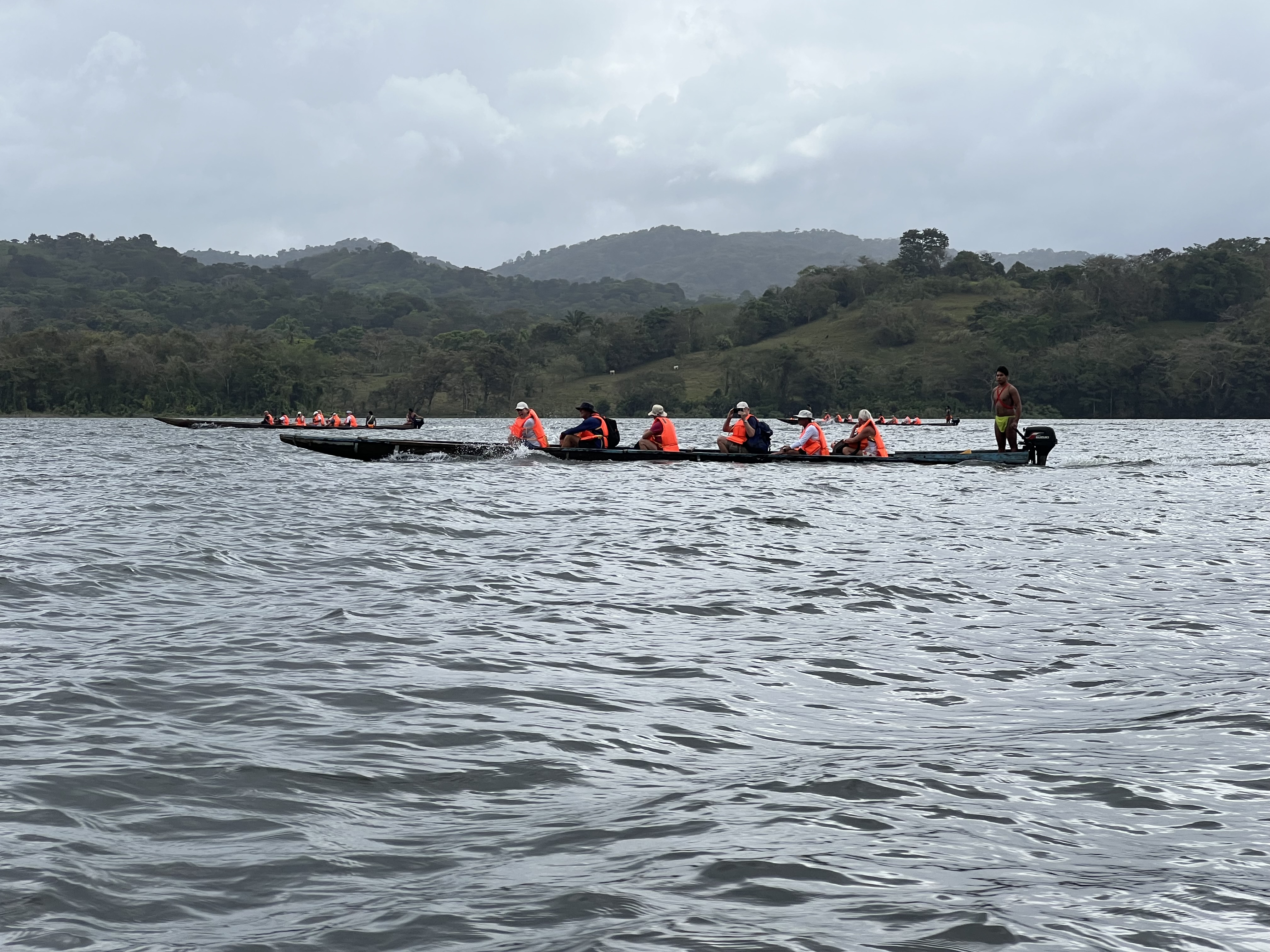
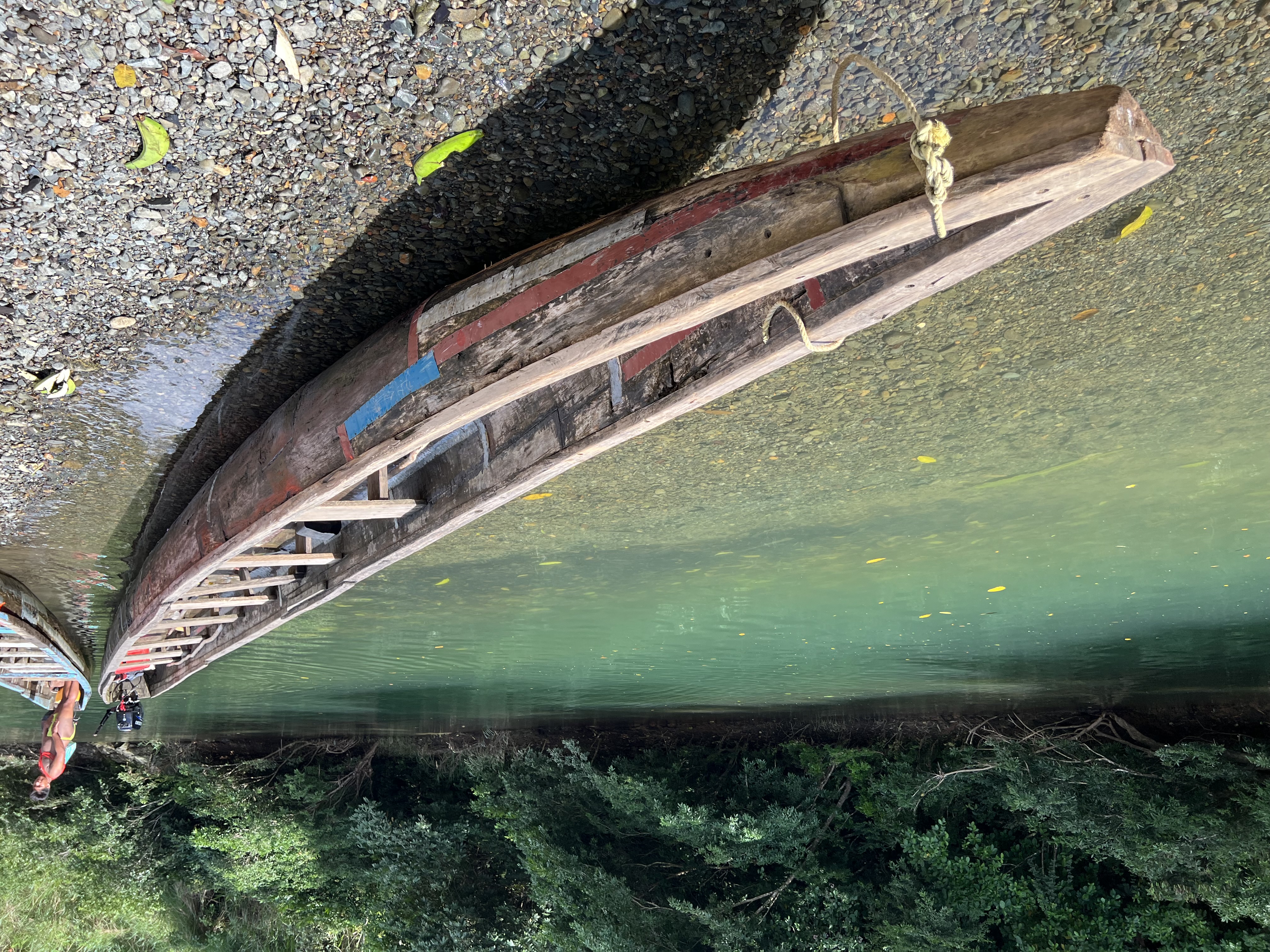
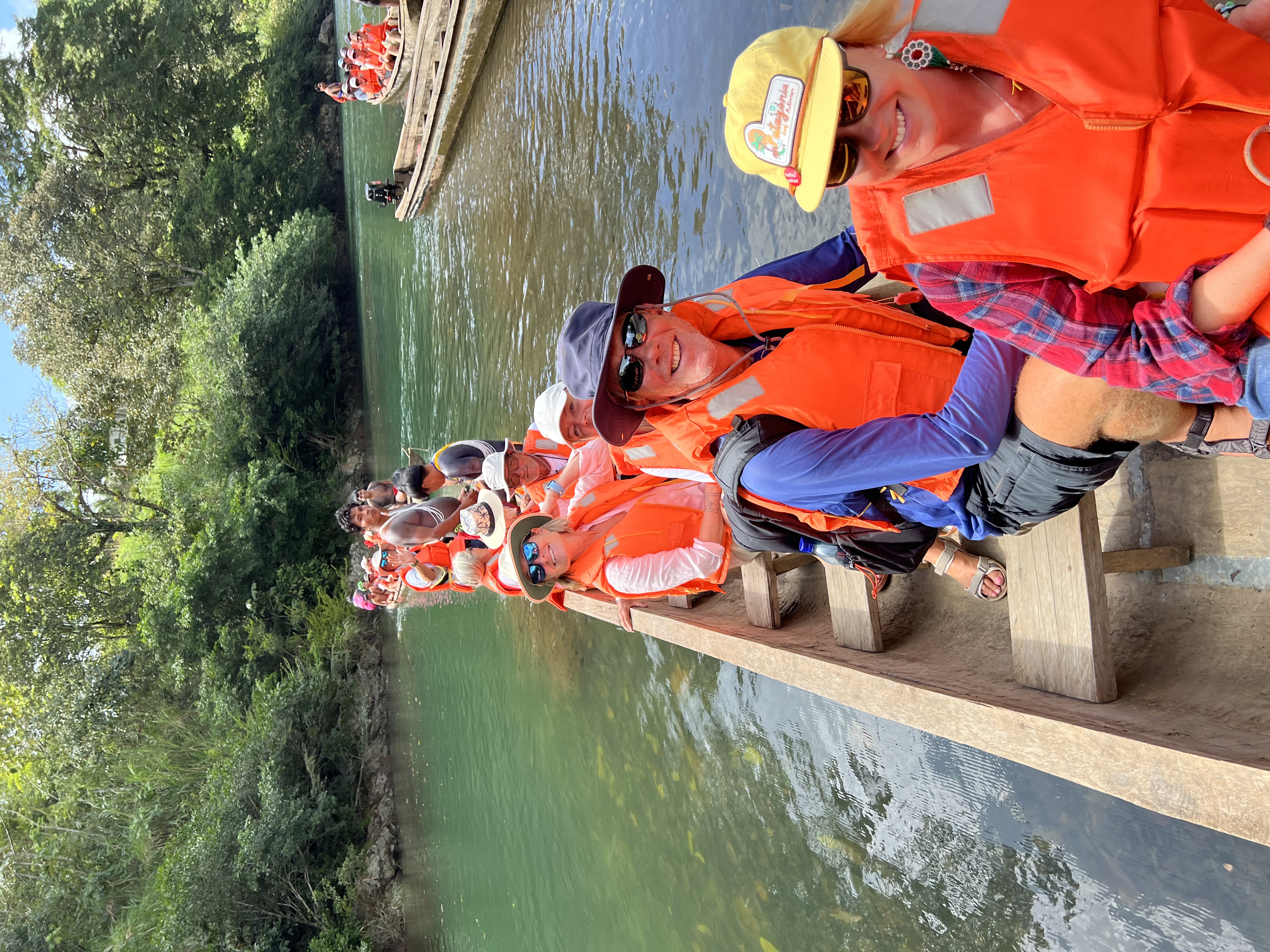 As we arrived, there were drums playing, and a bamboo flute creating the melody. We were welcomed by the village chief, or ‘Noko’, Erito and his wife Zuleica. He delivered a brief explanation of his village and history of his people. In the village, they were a community of 131 people, until a baby was born just last week, he mentioned, proudly. They have 32 houses in the village and their own language of Emberá is known, but many of the adults speak Spanish, and the children now learn Spanish at school.
As we arrived, there were drums playing, and a bamboo flute creating the melody. We were welcomed by the village chief, or ‘Noko’, Erito and his wife Zuleica. He delivered a brief explanation of his village and history of his people. In the village, they were a community of 131 people, until a baby was born just last week, he mentioned, proudly. They have 32 houses in the village and their own language of Emberá is known, but many of the adults speak Spanish, and the children now learn Spanish at school.
There are seven indigenous groups of Emberá in Panama. Each group has a region assigned by the government. They have autonomy over their territory - the Darién province is their territory (which borders Colombia). The largest groups of indigenous people in Panama, Erito says, are the Emberá and Guna in the San Blas Islands.
They moved from their province of Darién in the 1960s to their current location on the border of the Colon/Panama provinces due to the Colombian Conflict involving the Colombian government, the Revolutionary Armed Forces of Colombia (FARC) and drug lords in the corridor which borders Colombia. They found this area near Colon to be similar to their original home and relocated. In fact, after the lake was dammed for the canal, it made it an even more appealing location. They had what they needed when they arrived, but in 1986 the government made their new area the Chagres National Park, so they were no longer allowed to manage the land, and had to find alternative income streams. The government suggested to the Emberá people that they received tourists to generate income to get what they need in addition to what they grow and rear.
In the indigenous territories, they have a regional chief, and then smaller chiefs in each community like Erito. They tend to elect leaders from people older than 30, and this happens by way of a queue - a line behind the person they support - then that person is elected. The leader of the community looks after the wellbeing of the community, and is the first point of contact with the government. Our guide, Clemente, tells us that whilst a woman could technically be ‘Noko’, it hasn’t happened yet.
Day-to-day life consists in part of re-building and repairing their huts. In the centre of the village is a huge central hut about 25 metres across, that was built as a 5 month effort from the whole community. Centuries ago, the people would live in the same kind of huts - they are strong, airy, and a well made palm roof is waterproof and can last for up to 15 years. They would use different species of royal palm and ivory palm to make the roofs, and any of the local hardwoods found nearby to make the posts, which can include Spanish espave and teca (teak).
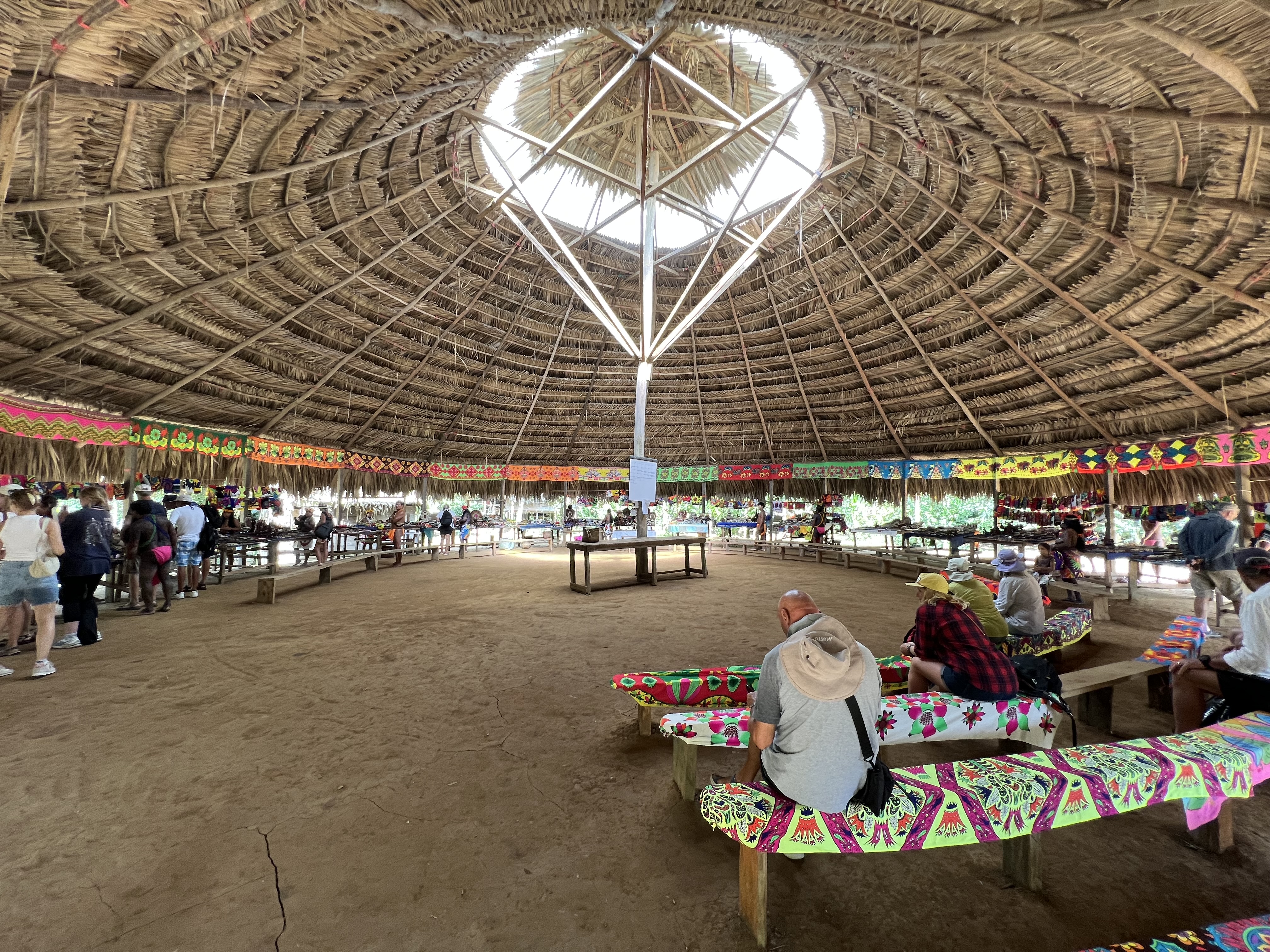
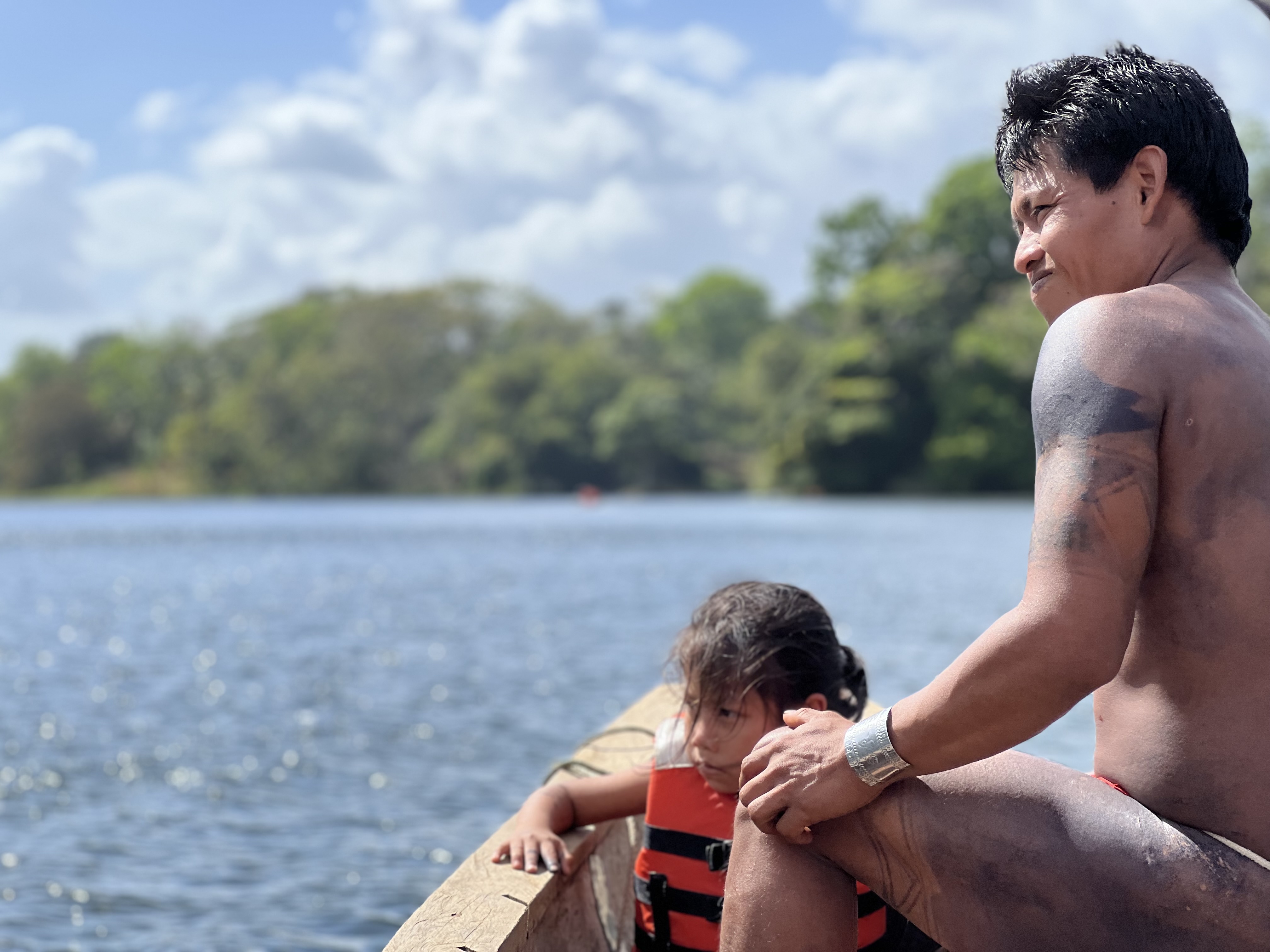
If anyone in the village fell ill, the Emberá would try traditional medicine first. They made one man the village shaman, and if he couldn’t cure it, the person would leave the village to seek help elsewhere. Babies are all born in the village. One of our group asked the question ‘at what age do women in the village have babies?’. Years ago, this used to happen between 14-15 years of age but these days, Erito tells us, young women are waiting until 18-20 years old so that they can enjoy some more education or experiences first. He tells us that Emberá can marry within the village or with other villagers, following which they can then live together in either village.
There is a multi-grade school in this village - two teachers are paid by the government and are from Panamá City, and one is from the Emberá village. The external teachers stay in the village for the week from Monday to Friday. The children have to wear a uniform and sing the Panamanian national anthem, just like in any other Panamanian school. After leaving school, the children are not obliged to stay in the Emberá village - some leave and become nurses, professors and similar professions.
Craft is a big part of their lives as it contributes a huge amount to their livelihoods. They pass on their knowledge and techniques to their children. All kind of natural substances are used in the creation of their crafts; tagua is a nut that grows on an ivory palm, which is soft to eat and you can drink the liquid. However, when it dries, they can make jewellery and small ornaments out of the nuts. It can be seen as a sustainable substitute for ivory, hence the name. Wood from the cocobolo tree has wonderful undulating colours and patterns and can be carved using a machete, drills and files to make ornaments. Making a basket is quite a talent, and the Emberá Purú people use palm fibres with thicker strands to make the structure of their baskets or plates. They then use thinner palm fibres to create more rigidity and intricate patterns. Lemon juice will bleach the fibres to get light colours. Cocobolo wood shavings, boiled with the thin fibres, gets a brown colour. Black fibres are made by burying the fibres in black mud by the river for 3 days. Red fibres are made by boiling certain paprika leaves with them. For yellow, turmeric roots can be boiled with the fibres. A 12” bowl can take 15 days to weave, and pricing is determined by the time spent; this works out at about $1 US per day.
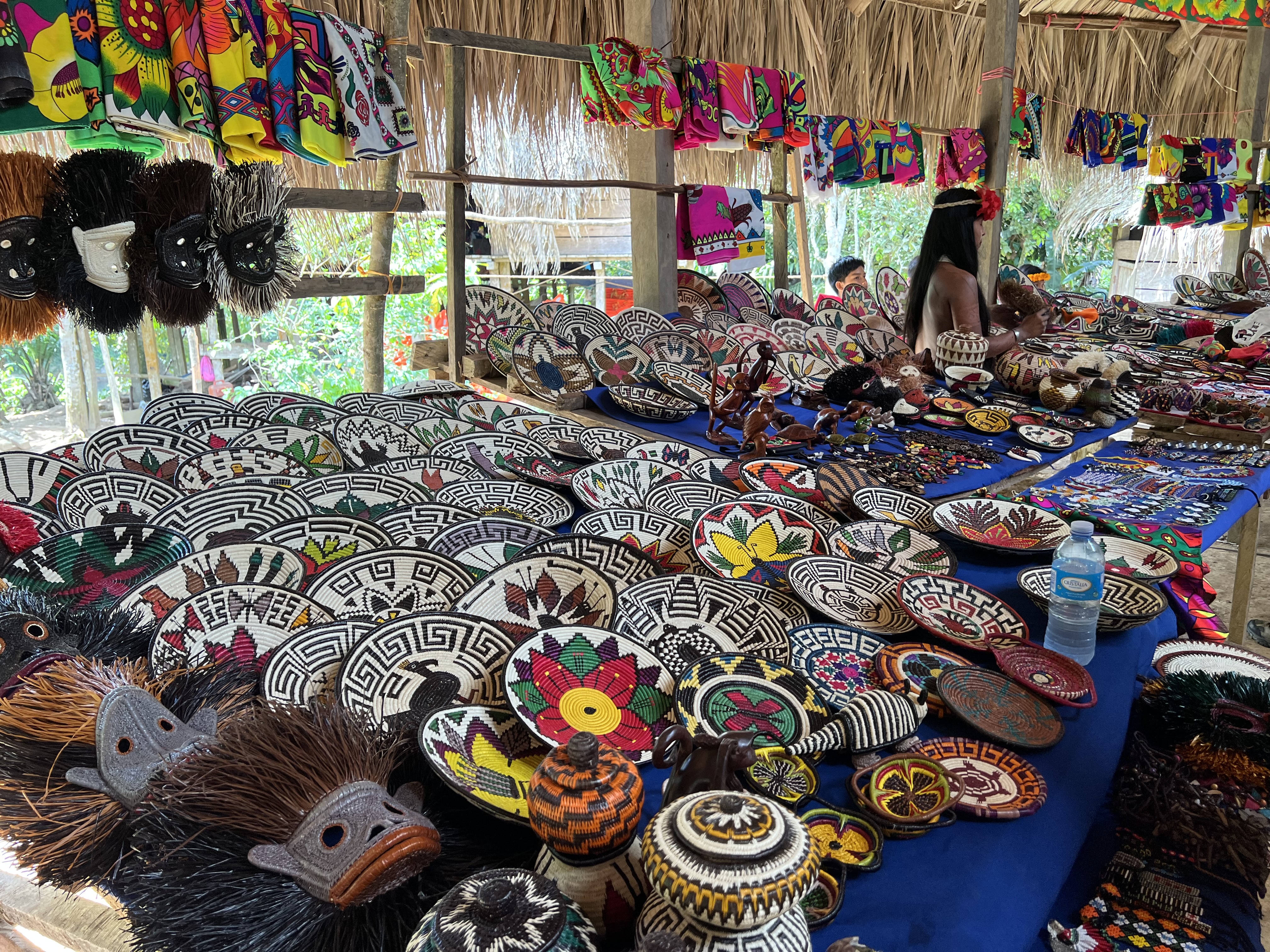
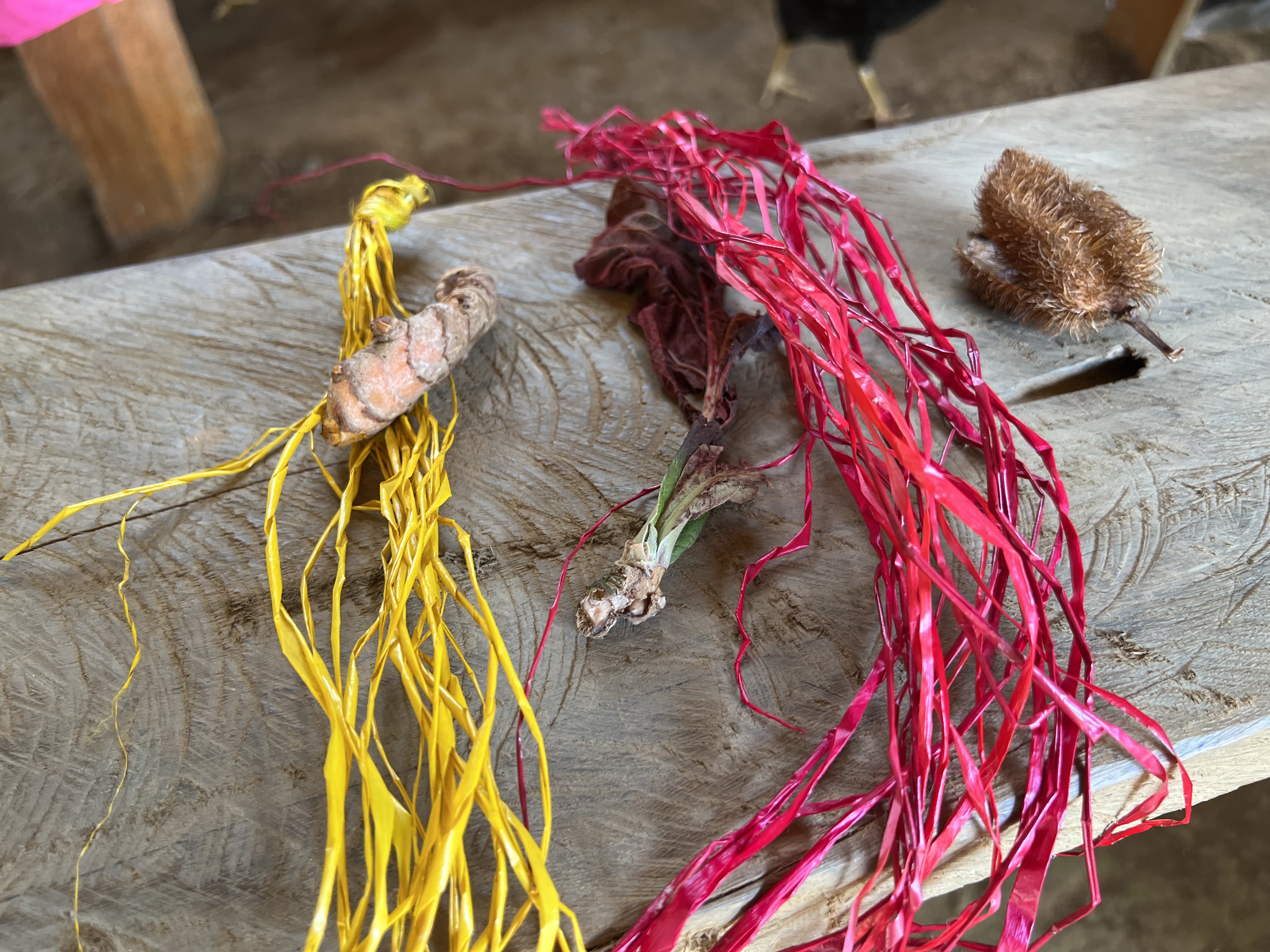
The people have a distinctive way of dressing, with most people topless, and the men wearing a simple coloured cloth and patterned beads crossing their chest, and the women wearing a sarong and beads around their necks. Shoes are uncommon. Most of the people to a greater or lesser extent have a black/blue coloured dye applied to their skin showing creative geometric designs. They say it keeps away the mosquitos, but it also looks fantastic! The dye is made from ripe jagua fruit, and lasts on the skin for 7-10 days.
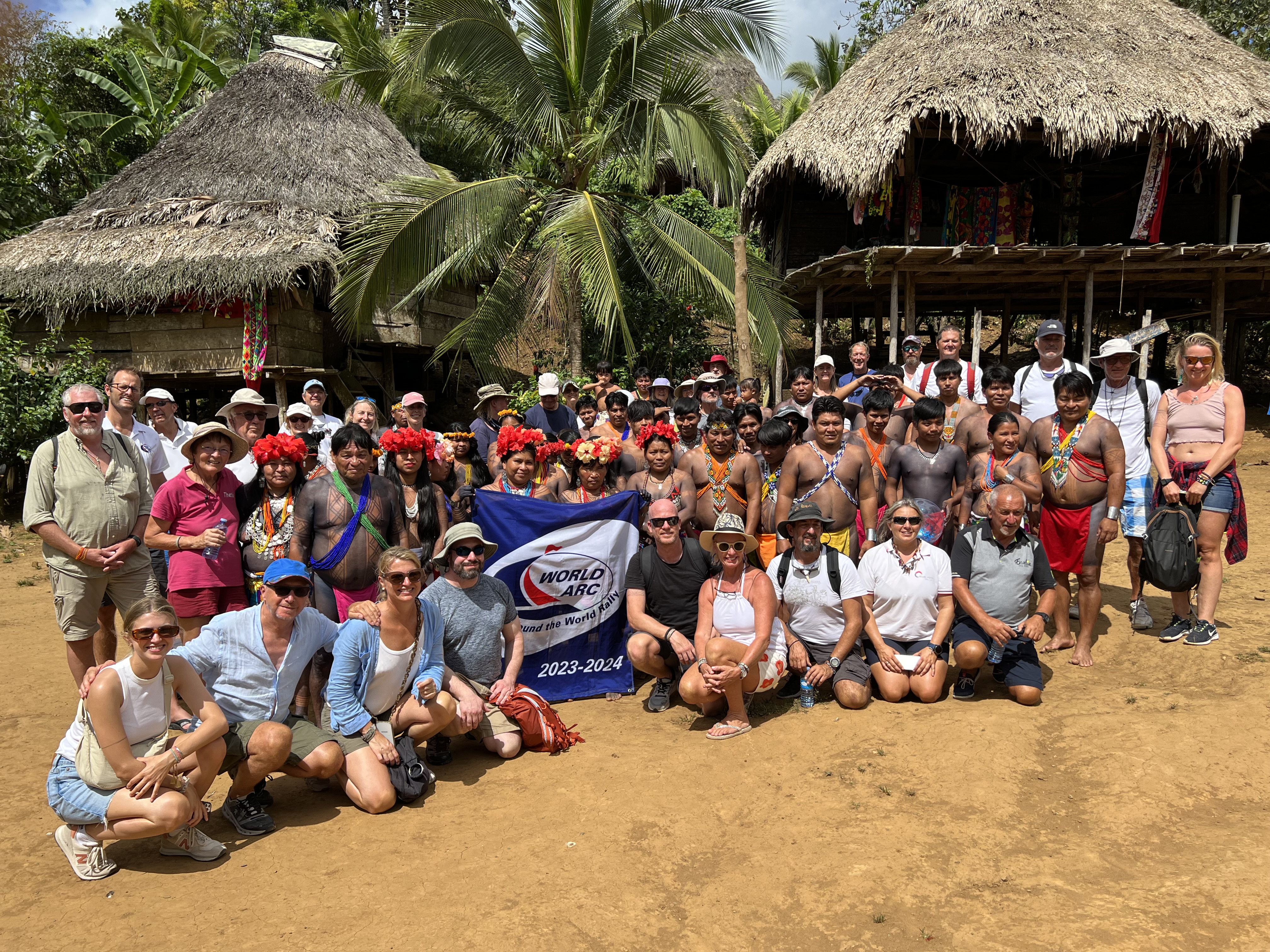
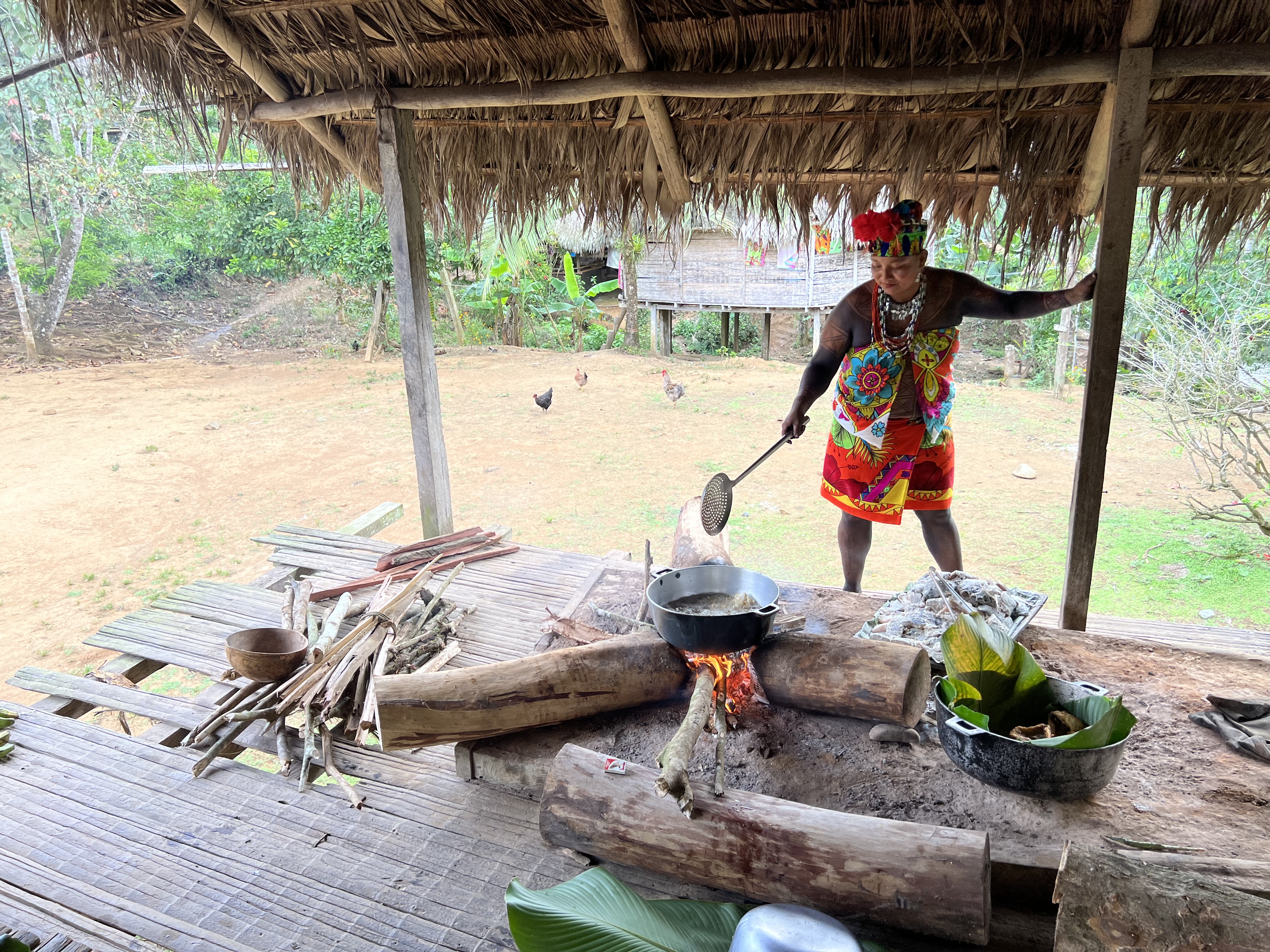 After our talk, the women of the village (led by one obvious matriarch), who had been cooking all morning delivered us a simple but tasty lunch of patacones (fried plantains) and fresh tilapia fish from the river. It was all contained within a banana leaf pinned together with a bamboo skewer. Very sustainable.
After our talk, the women of the village (led by one obvious matriarch), who had been cooking all morning delivered us a simple but tasty lunch of patacones (fried plantains) and fresh tilapia fish from the river. It was all contained within a banana leaf pinned together with a bamboo skewer. Very sustainable.
The Noko, Erito, tells us that there are dangerous animals in the jungle - wild pigs, jaguar, ocelots… sloths. But despite this, it is a beautiful place to visit, and the people are welcoming. It was a thoroughly insightful and interesting day in all, and one never to be forgotten.